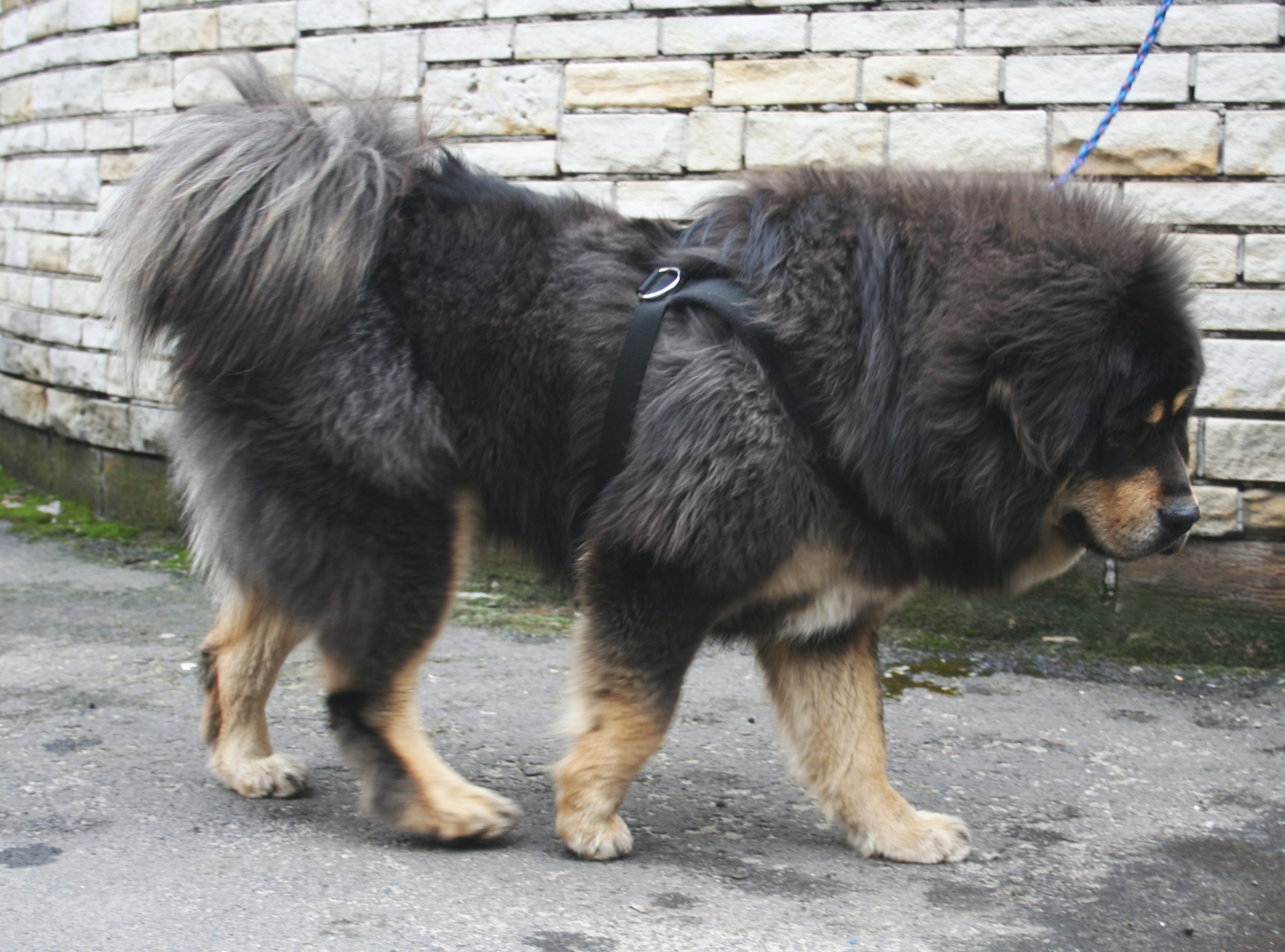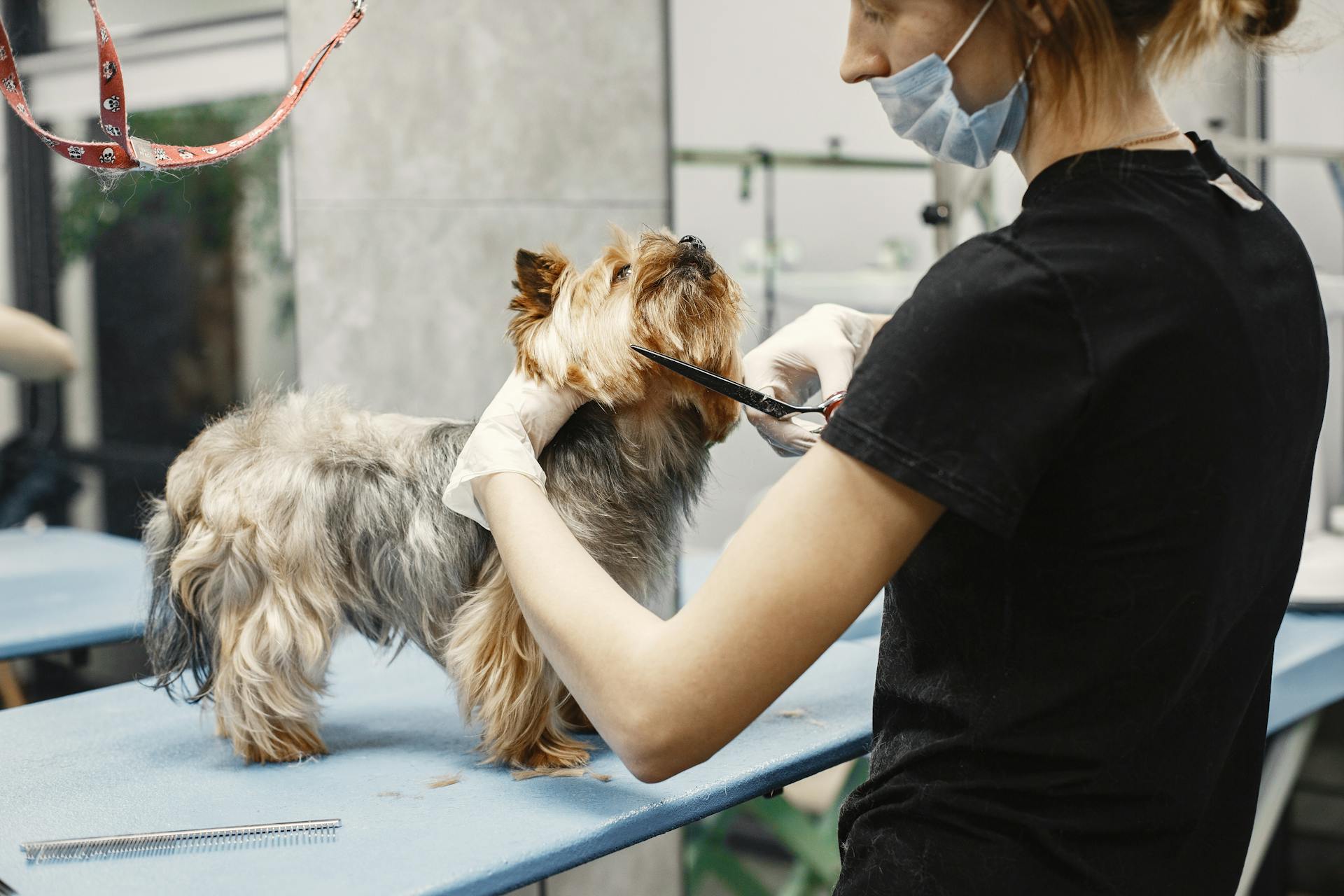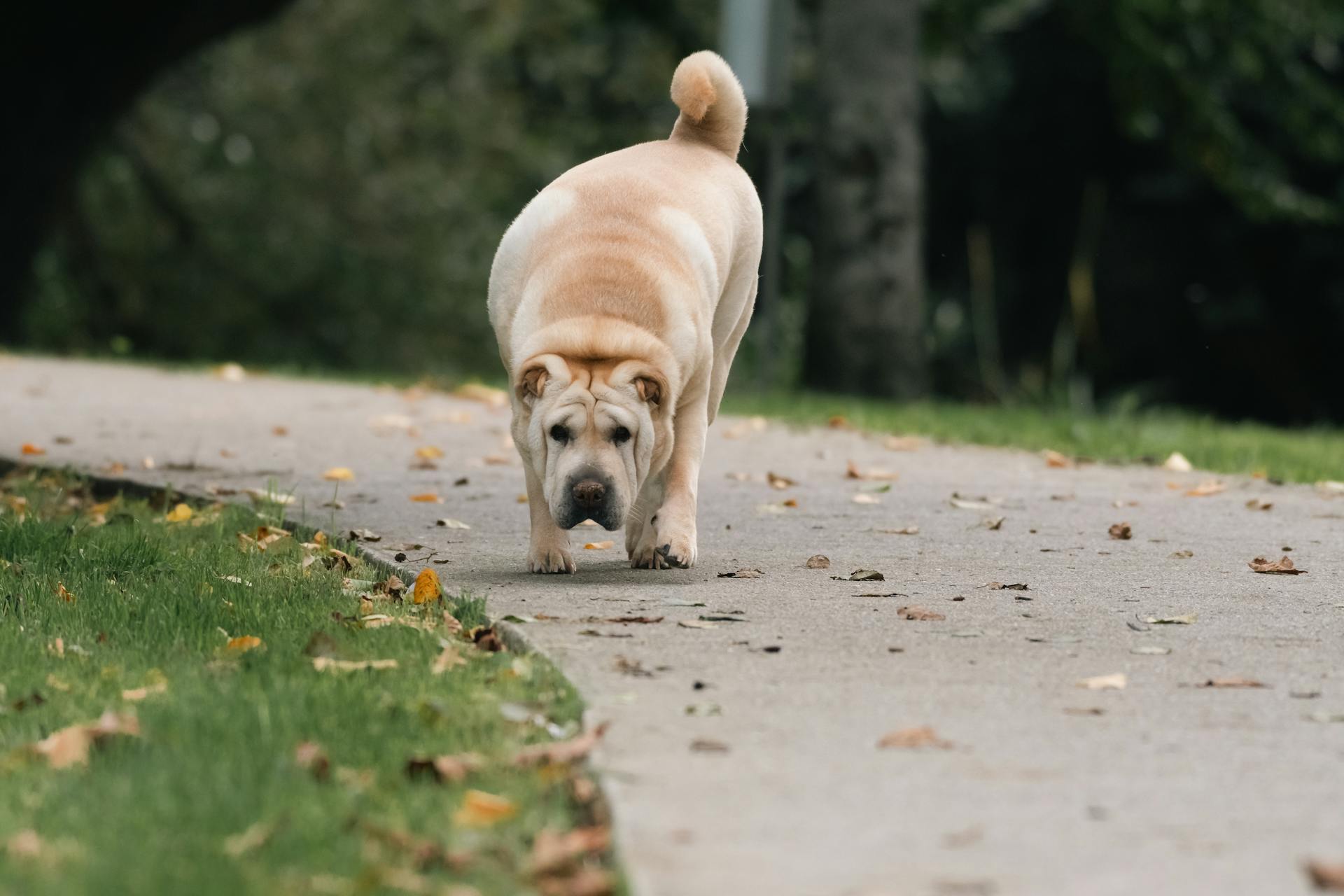
The Chinese Tibetan Mastiff is an ancient breed that originated in the Himalayan region, known for its distinctive physical characteristics and loyal temperament. They are a large breed, with males weighing up to 230 pounds and standing over 26 inches tall.
Their thick coat is a key feature, with a double layer that protects them from the harsh Tibetan climate. This coat requires regular grooming to prevent matting and tangling.
Chinese Tibetan Mastiffs are highly intelligent and independent dogs, requiring early socialization and training to become well-behaved companions. They are naturally protective of their family and territory, but can be wary of strangers.
Temperament and Personality
Tibetan Mastiffs are independent introverts who tend to be wary of strangers but are loving and loyal to their people.
They have a strong sense of self and can be stubborn, expecting to be treated as an equal, not as a pet. This means they want to please their people, but they also have their own agenda and must often be reminded of what they've been asked to do.
Tibetan Mastiffs require proper socialization from an early age to prevent them from becoming territorially aggressive. Enrolling them in a puppy kindergarten class or exposing them to various people, pets, and situations can help them become more accepting.
Their protective instinct is never far from the surface, making them a great guardian for families, but also requiring careful handling and supervision, especially around young children.
Temperament and Personality
Tibetan Mastiffs are independent introverts who tend to be wary of strangers but are loving and loyal to their people.
Their guardian instincts dominate their personality, making them naturally protective of their family. This can sometimes be misinterpreted as unfriendliness, but it's more accurate to say they are discerning in their affections.
Tibetan Mastiffs tend to form deep bonds with their family members and display loyalty and a gentle demeanor towards those they trust. Early and positive experiences with a variety of people, animals, and environments can help soften their cautious approach to newcomers.
Their protective instinct is never far from the surface, and they can become protective if they perceive a threat to their family. This behavior isn’t a sign of aggression but rather a manifestation of their deep-seated role as protectors.
They are intelligent and have a strong sense of self, expecting to be treated as an equal, not as a pet. This can sometimes make them seem stubborn or headstrong.
The Tibetan Mastiff is a loyal family guardian who takes his job seriously and is aloof or reserved toward strangers. Proper socialization from an early age is crucial to prevent them from becoming territorially aggressive.
With plenty of exposure to different people, pets, and situations throughout their lives, they’ll be more accepting, though perhaps still aloof, reserving their affection for loved ones.
If this caught your attention, see: Bernese Mountain Dog Protective
Training
The Tibetan Mastiff is a breed that requires consistent and patient training, as they can be stubborn and independent. They have a strong sense of self and may not always listen to commands.
To train a Tibetan Mastiff, it's essential to start early and reinforce rules consistently throughout their lifetime. They are intelligent and capable of learning basic obedience skills, but they can be challenging to train due to their independent nature.
Tibetan Mastiffs are naturally suspicious of strangers, which makes it crucial for owners to be capable of physically restraining their dog when necessary. This is especially important in public or at home.
Early socialization is vital to prevent territorial aggression and help your Tibetan Mastiff become a well-adjusted family member. Enrolling them in puppy kindergarten and exposing them to various people, children, animals, and situations can make a significant difference.
Training a Tibetan Mastiff requires a strong and patient leader who can earn their trust and respect. This means being consistent, firm, and rewarding desirable behavior with high-value treats or toys.
A different take: How to Train a German Shorthaired Pointer to Hunt
Size and Appearance
The Chinese Tibetan Mastiff is a majestic breed, and their size is truly impressive. A male Tibetan Mastiff stands at least 26 inches tall at the shoulder and weighs in the vicinity of 100 to 160 or more pounds.
Females are slightly smaller, standing at least 24 inches tall at the shoulder and weighing 75 to 125 or more pounds. Their enormous size and copious amounts of fluff give them the appearance of something between an actual lion and a cuddly teddy bear.
Their thick mane of hair on their muscular necks and shoulders contributes to their lionish look, and their expressive eyes convey intelligence and alertness. Here are some key features to look out for:
- Ears: Medium-sized, V-shaped and sit high on the skull, drooping forward when relaxed and standing at attention when alert.
- Eyes: Watchful brown eyes, rimmed in black or dark gray and are almond-shaped, deep-set and slightly slanted.
- Nose: Broad with open nostrils, and can be black, dark gray or dark brown, depending on the coloring of the coat.
- Coat: Double coated with a thick top coat of long, coarse and straight hair, with a soft, heavy undercoat that thins out in warmer seasons.
- Coat Color: Black, brown, blue or gray, with possible markings of tan, mahogany, gold, red-gold or white.
- Tail: Covered with a thick plume of feathered hair, usually carried high and curves over the hindquarters.
Differences Between Chinese and Native Bloodlines
Chinese Tibetan mastiffs, also known as Chinese mastiffs, have been developed through a peculiar selection process by some Chinese breeders over 20 years.
These dogs have been bred using in-breeding, which has resulted in a distinct physical appearance that differs from original Tibetan mastiffs.
Many people question the purity of these Chinese dogs, attributing their differences to crossbreeding with other breeds like Chow-Chow, Newfoundland, Spanish Mastiff, and Sharpei.

Native Tibetan mastiffs, on the other hand, are directly descended from their original ancestors and have been living and working with Tibetan nomads or in monasteries in remote areas.
Their similarity to illustrated Tibetan specimens from years ago further confirms their purity and quality.
Chinese breeders who claim to have "native" dogs are often mistaken, as their dogs were likely born in a Chinese kennel rather than in the Tibetan plateau.
These Chinese kennels may be cleverly located near the Tibetan plateau, but they are not the same as the remote areas where native Tibetan mastiffs have been living and working.
Broaden your view: Native Mountain Dogs
Size
Tibetan Mastiffs are truly massive dogs. A male Tibetan Mastiff stands at least 26 inches tall at the shoulder and weighs in the vicinity of 100 to 160 or more pounds.
Females are slightly smaller, but still quite large, standing at least 24 inches tall and weighing 75 to 125 or more pounds.

In some cases, you might come across Tibetan Mastiffs that are even bigger than the average size. However, it's essential to note that oversized dogs can be prone to health issues, such as hip dysplasia, which is a common problem in this breed.
Our kennel focuses on breeding dogs with typical characteristics and good health, rather than just their size. In fact, our Tibetan Mastiffs often exceed the official FCI standard for height, with males reaching 66 cm (26 ins) or more at the withers, and females reaching 61 cm (24 ins) or more.
Here's a quick comparison of the average size of Tibetan Mastiffs:
Keep in mind that size is just one aspect of a dog's overall health and well-being.
Health and Care
The Chinese Tibetan Mastiff is a majestic breed that requires special care and handling. Early socialization is key to preventing potential behavioral issues, so introduce your puppy to as many people, places, animals, and things as possible, keeping interactions positive and going at the dog's pace.
Socialization is a must for this breed, as Tibetan Mastiffs can be overly dominant toward other dogs and become overly protective of their home and family. Regular training practice and social interaction will help ensure that you live together happily.
To prevent orthopedic damage, limit exercise to free play in the yard, and avoid long walks until your puppy is a year old. Regular exercise, such as 20 to 30 minutes of play in the yard or a half-hour walk, is essential to keep your Tibetan Mastiff healthy and happy.
Here are some common health issues to be aware of in the Tibetan Mastiff breed:
- Hip Dysplasia: an abnormal development of one or both hip joints.
- Elbow Dysplasia: a skeletal condition that leads to malformation and degeneration of the elbow joints.
- Hypothyroidism: a condition where the thyroid gland does not produce enough thyroid hormones.
- Progressive Retinal Atrophy: a breed-prone condition that affects the ability of your dog to see.
- Bloat: a life-threatening condition that can cause gastric dilatation-volvulus (GDV), which is when the stomach becomes twisted.
- Eye problems: such as Entropion and Ectropion, which can cause irritation and discomfort, and in severe cases, damage the cornea.
Health
Tibetan Mastiffs are generally a healthy breed, but like all breeds, they can be prone to certain health issues. Their life expectancy is around 10 to 12 years.
Hip dysplasia is a common issue in Tibetan Mastiffs, which can lead to arthritis and mobility problems. Responsible breeders test their adult dogs for this condition before breeding.
Elbow dysplasia is another skeletal condition that affects the elbow joints, causing pain and mobility issues. Keeping your dog at a healthy weight and using joint supplements can help manage these conditions.
Bloat is a life-threatening condition that can cause the stomach to twist, leading to severe symptoms and potentially requiring emergency surgery. If you suspect your dog has bloat, get them to the vet immediately.
Hypothyroidism is an endocrine disorder that can be easily managed with daily medication. It's essential to work with your vet to ensure your dog receives the right treatment.
Eye problems, such as entropion and ectropion, can cause irritation and discomfort, but in severe cases, they can damage the cornea. Your vet may recommend topical ointments or surgery to address these issues.
To keep your Tibetan Mastiff healthy, it's crucial to stay on top of their health issues. Regular check-ups with your vet, a balanced diet, and plenty of exercise can go a long way in preventing these conditions.
Care

The Tibetan Mastiff's grooming needs are surprisingly low, considering their thick coat. They shed very little outside of their seasonal shed, which usually occurs in spring or summer.
To manage their coat, weekly brushing with a wire slicker brush is enough to keep their moderate shedding under control. This also helps prevent matting and tangling, especially in areas like the neck and ears.
Their coats are good at repelling dirt, and they don't tend to have that "dog smell", so they don't need to be bathed more than once a month. However, they do require regular dental hygiene and nail care.
Brushing your Tibetan Mastiff's teeth daily can help prevent tooth and gum disease. You should also trim their nails once or twice a month, or as needed, to keep their feet in good condition.
Here's a summary of their grooming needs:
- Brush their coat 1-3 times a week
- Bathe them once a month
- Brush their teeth daily
- Trim their nails once or twice a month
- Check their ears weekly for debris or signs of infection
By following these simple grooming tips, you can help keep your Tibetan Mastiff clean, healthy, and happy.
Diet and Nutrition
Tibetan Mastiffs are surprisingly low-maintenance eaters, consuming less food than you'd expect for their massive size.
To ensure your Tibetan Mastiff gets the right amount of food, it's essential to measure their daily intake and divide it into two meals. This will help prevent gastric dilatation volvulus, also known as bloat.
The quality of dog food makes a significant difference - a high-quality food will go further in nourishing your dog and reduce the amount needed to be fed.
You should be able to see a waist when looking down at your Tibetan Mastiff, and with your hands on their back, you should be able to feel but not see their ribs without pressing hard.
Feeding your Tibetan Mastiff high-quality dog food is crucial, especially if they have a sensitive appetite or are prone to food strikes.
Free feeding can lead to weight gain, which puts stress on the joints and contributes to health issues, so it's best to stick to measured meals.
Tibetan Mastiffs don't need a lot of food, and in fact, eating too much can be detrimental, especially during summer when they should be on a diet low in proteins and calories.
For your interest: When Is Female Dog Ready to Breed
Living with a Chinese Tibetan Mastiff
The Tibetan Mastiff is suitable for families with older children, but he can be too large to safely spend much time around toddlers. He would never mean to hurt them, but he could easily knock them over or step on them.
It's essential to teach children how to approach and touch dogs, and always supervise any interactions between dogs and young children to prevent any biting or ear or tail pulling on the part of either party.
Children and Pets
Living with a Chinese Tibetan Mastiff is a unique experience, and one of the most important considerations is how to introduce your new furry friend to the children in your household.
Tibetan Mastiffs are generally good with children, but they can be too large to safely spend much time around toddlers. They may accidentally knock them over or step on them.
It's essential to teach children how to approach and touch dogs gently, and to supervise any interactions between dogs and young children to prevent biting or ear or tail pulling.
Tibetan Mastiffs get along well with other dogs and cats when they're raised with them, but as adults, they may require more of an adjustment period before welcoming new pets.
In Tibetan nomad villages, Tibetan Mastiffs have a natural bond with young children and consider them as those who need greater protection, often becoming inseparable companions.
Make sure to supervise playtime between your Tibetan Mastiff and children, and establish rules that children are never to run and scream in the dog's presence to avoid exciting him.
Sleeping Outdoors in Winter
Living with a Chinese Tibetan Mastiff means you'll need to prepare for the cold winter months. Tibetan mastiffs are used to living in extremely harsh climate conditions, where temperatures can drop below 0°C (32°F) for many months.
They have no problems living outdoors during the day and night, even when it's very cold and there's snow and ice.
Recommended read: 4 Months Dogo Argentino Puppy
Adopt or Buy
If you're considering bringing a Chinese Tibetan Mastiff into your life, you'll need to decide whether to adopt or buy. Expect to pay between $1,500 to $5,000 for a purebred Tibetan Mastiff.
You can find reputable breeders through organizations like the American Tibetan Mastiff Association or by searching the AKC Marketplace. If you're interested in adopting an adult Tibetan Mastiff, Tibetan Mastiff Rescue is a great resource, with an active Facebook page to stay up-to-date on available dogs.
Some adult Tibetan Mastiffs might find themselves in rescue on occasion, so it's worth exploring this option if you're looking to add a new furry friend to your family.
Frequently Asked Questions
How much is a Chinese Tibetan Mastiff?
A Chinese Tibetan Mastiff can cost between $2000 and $12,000, depending on factors like bloodline, coat color, and breeder reputation. Prices vary widely, making it essential to research reputable breeders for a fair and accurate quote.
Are Tibetan mastiffs legal in the United States?
In the US, there are no federal laws banning Tibetan Mastiffs, but local regulations may vary. However, their large size and protective instincts can be a concern, making them restricted in some areas.
Featured Images: pexels.com


